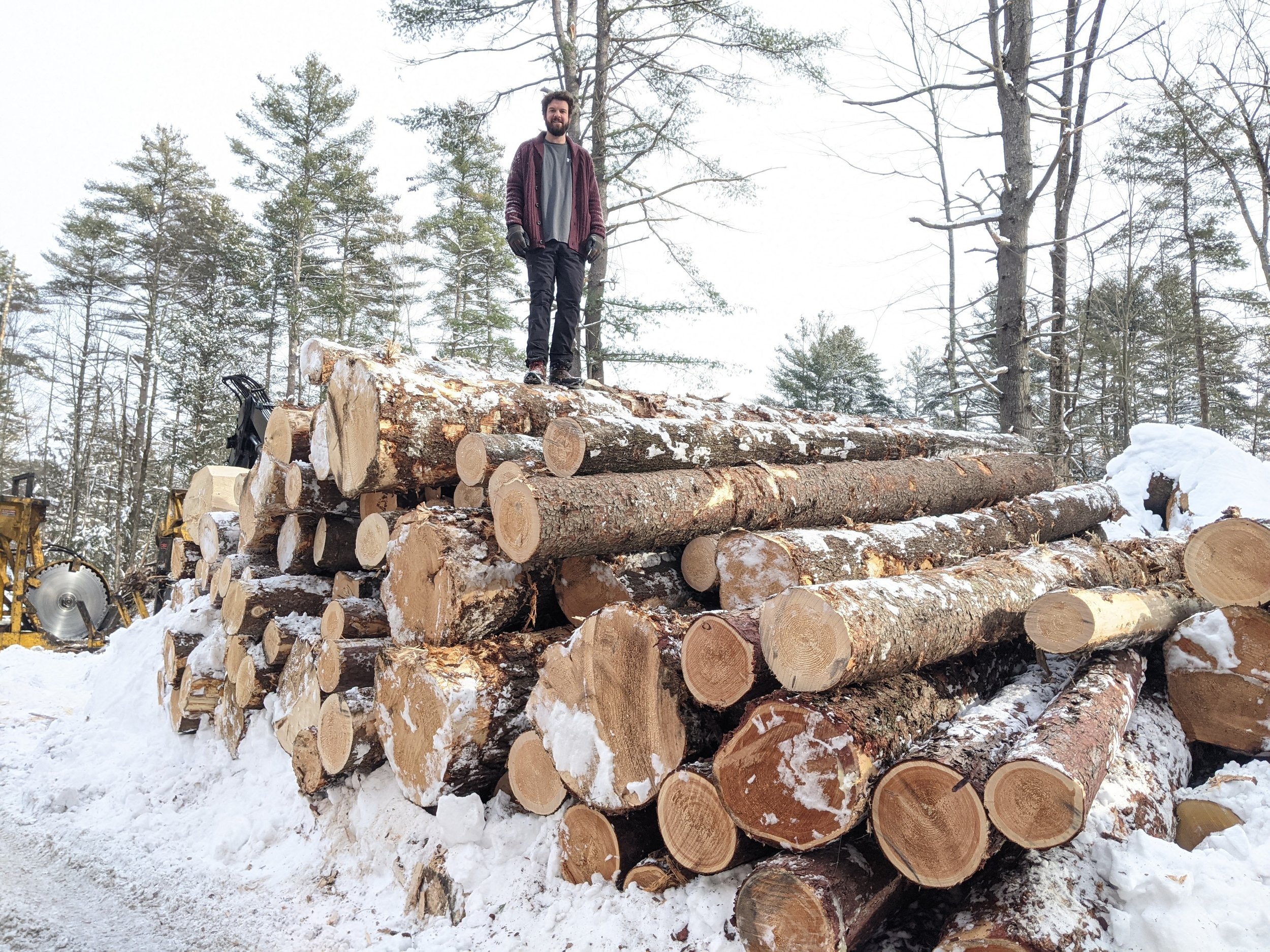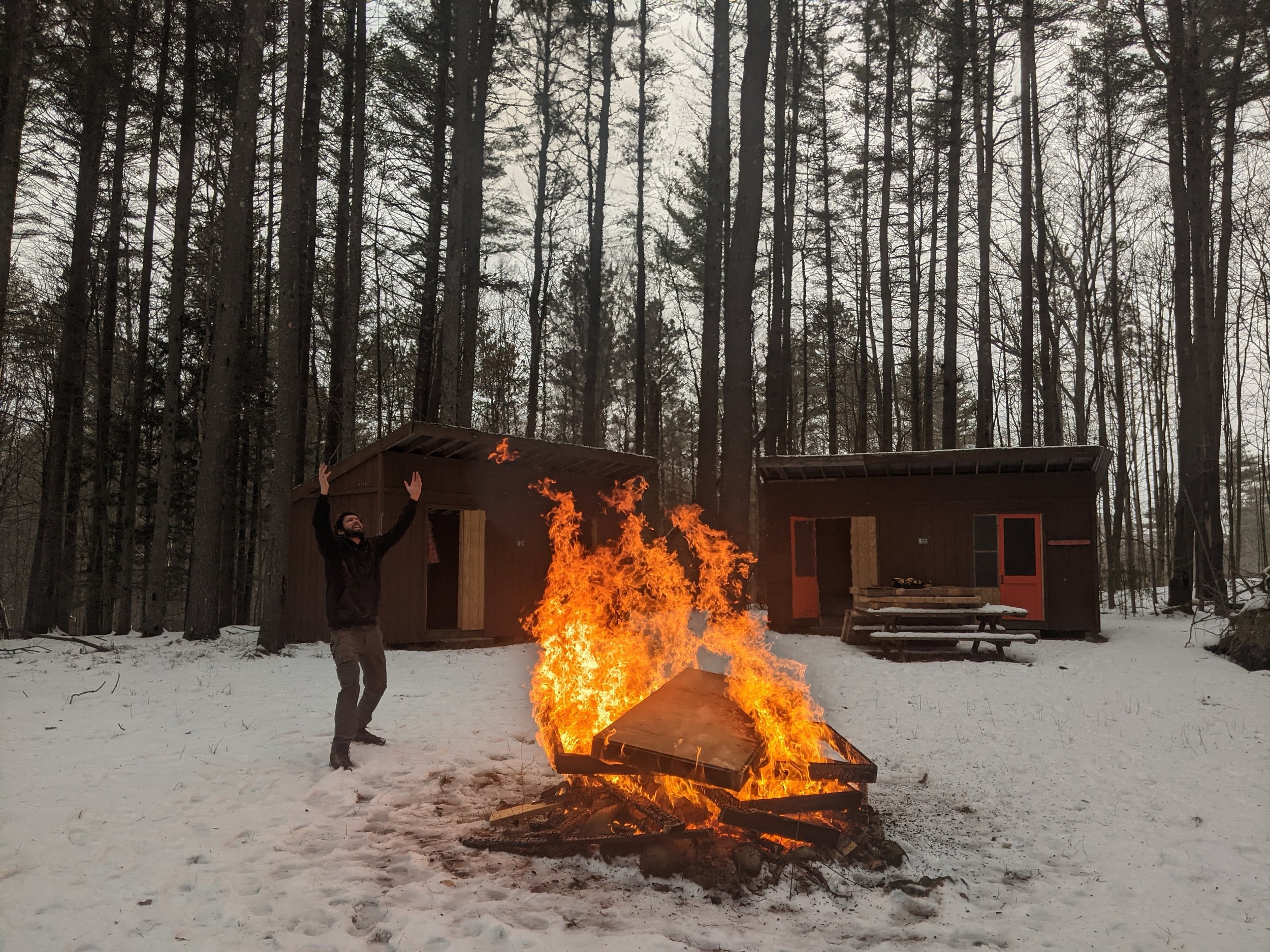Facilities Update with George!
The concept of Stomping Ground’s “Forever Home” is an inspiring one. The story goes: Camp started in 2015 at a rented site in New Jersey. It was a group of friends from a bunch of different places around the country with a summer camping industry commonality among them. There were 56 campers who payed an average of $200, about 25 staff who volunteered their week, eager to catch up with old friends and be a part of this new endeavor and mostly just to have a good time. In my opinion that week was a little chaotic, Laura might call it disastrous…
Fast forward one year to 2016, we’re renting a new site in the Empire State, we’re increasing the number of weeks we serve campers, we’re paying counselors. Look at that! This is starting to turn into a sustainable business. Every summer I was returning to Stomping Ground to see what was next for the organization and witness the seemingly exponential growth and impact of the program.
George has been with camp every summer since 2015! We love George.
For me, this organizational growth culminates in March of 2020, hugely ironic timing from a business standpoint, when co-founder Jack and I moved outside of Saratoga Springs to start working on the property that we would soon acquire later that year.
To be sure, my appointment to the role was with a certain Stomping Ground flavor:
Camp had no water systems, no plumbing, no electricity. It had rotting wood, leaking roofs and crumbling foundations. After the previous occupants had moved out, all walks of rodent and insect life had moved in to fill the void. Buildings were decrepit and failing. But one look at the dining hall, the lake, the forests left a viewer with a sense of limitless potential.
George takes care of the forest!
I had almost no prior facilities experience. I knew which end of a hammer to swing, how to use a shovel and that was about it. So we started there, tearing out the old bunks that were built into the shoddy lean-tos, digging trenches around the bath house that would eventually house the plumbing that we had contracted out. We cut and dragged thousands of pounds of fallen tree branches away from the roads and paths and off of buildings.
Thankfully Chris was involved, a long time friend of camp, an apprentice of the carpenter’s union and a mentor of mine. I learned more from Chris in those first few months than I did in four years of university. I learned how to cut wood in a straight line and change a door handle. I learned how to replace a metal roof, lay a new floor, and build a wall.
We had Stomping Ground’s network, Laura and Jack’s friends and family, come out and volunteer. A small army of former engineers and electricians and people willing to put the work in to invest in the site. I learned the basics of plumbing and electrical.
George loves demo days…
We also had the invaluable support of a local businessman, John Munter, from whom we’d acquired the property after he bought it with the intention of keeping it a youth-oriented outdoor facility. What John brings to our vision and effort is invaluable. His mentorship for how to tackle certain projects, and his enthusiasm for getting the job done made the last two years of facility improvements possible. (Plus anytime John lets us borrow a big construction vehicle like the mini excavator I know it’s going to be a good day at work).
Four months later I was operating an excavator and we had finished the first 24’x24’ cabin in the Blueberry patch. Since then, we’ve built seven cabins just like it and transported an old building which is now our health center across the road to a location that made sense for our program, outfitting it with interior framing and drywall, electricity and plumbing. We brought water and electricity all over camp and laid the infrastructure necessary to run our program.
We’re so lucky that our camp is in high demand, and people are excited about joining and having a Stomping Ground experience. After Laura and I were having a discussion about how to make space for more campers, Dylan and I cut down a tree into two 25’ sections and laid them side by side. We picked up a 12’x24’ old lean to, put it on top of our log sled and dragged it 75 yards, putting it down next to some other existing cabins. We found a way to make a new village that will foster connection for 24 teen campers at a time, furthering Stomping Ground’s mission of making camp accessible for more kids.
Campers on the first day of session 1!
When I say the property is inspiring I’m talking about the ability of Stomping Ground as an organization to live its words: “More is Possible”. To take what seemed at the start as an insurmountable task of getting the property up and running to the first moments when campers were arriving at our first drop off day last summer. I think this willingness to try, the willingness to Dream Big and the ability to make it happen is a microcosm for Stomping Ground as a whole.
That emotional moment was only made possible by the support of the Stomping Ground community. The hundreds of hours volunteers put in on site, the generosity of donors, the people who share Stomping Ground’s story and spread the word around, and the parents who believe in the mission and send their kids to be a part of it.
The White House is our next giant project for camp. Contact George to get involved!
Of course, the pace of work slows down in the winter. As I look outside in late December, there’s finally time for taking a breath and I’m feeling immensely proud of how far we’ve come with the site. I feel beyond grateful for all the contributors who made more possible and, as usual, I am in awe and invigorated by the amount of work left to do.
Please, if you have any questions about the site, or how to get involved as we plan volunteer weekends for the spring, do not hesitate to reach out to me or to Laura. We can’t wait to see you and to get to work taking the site and the program to the next stage.






